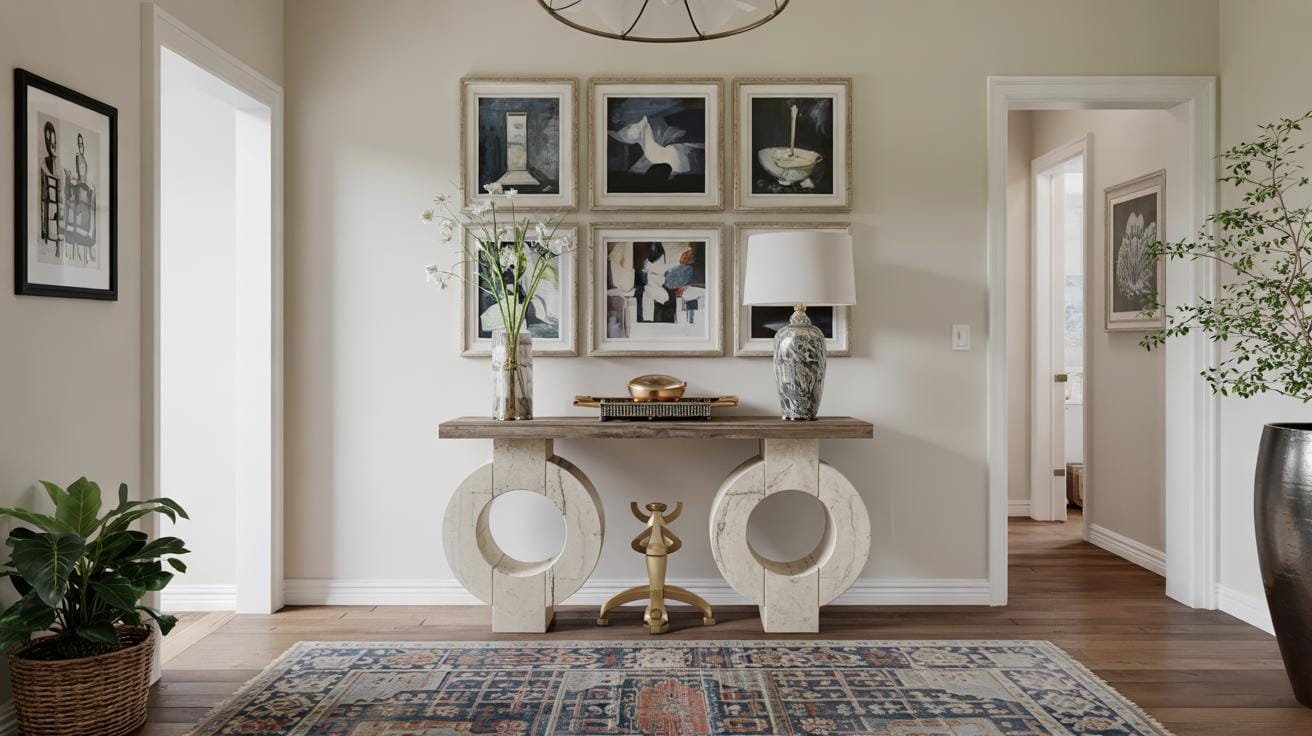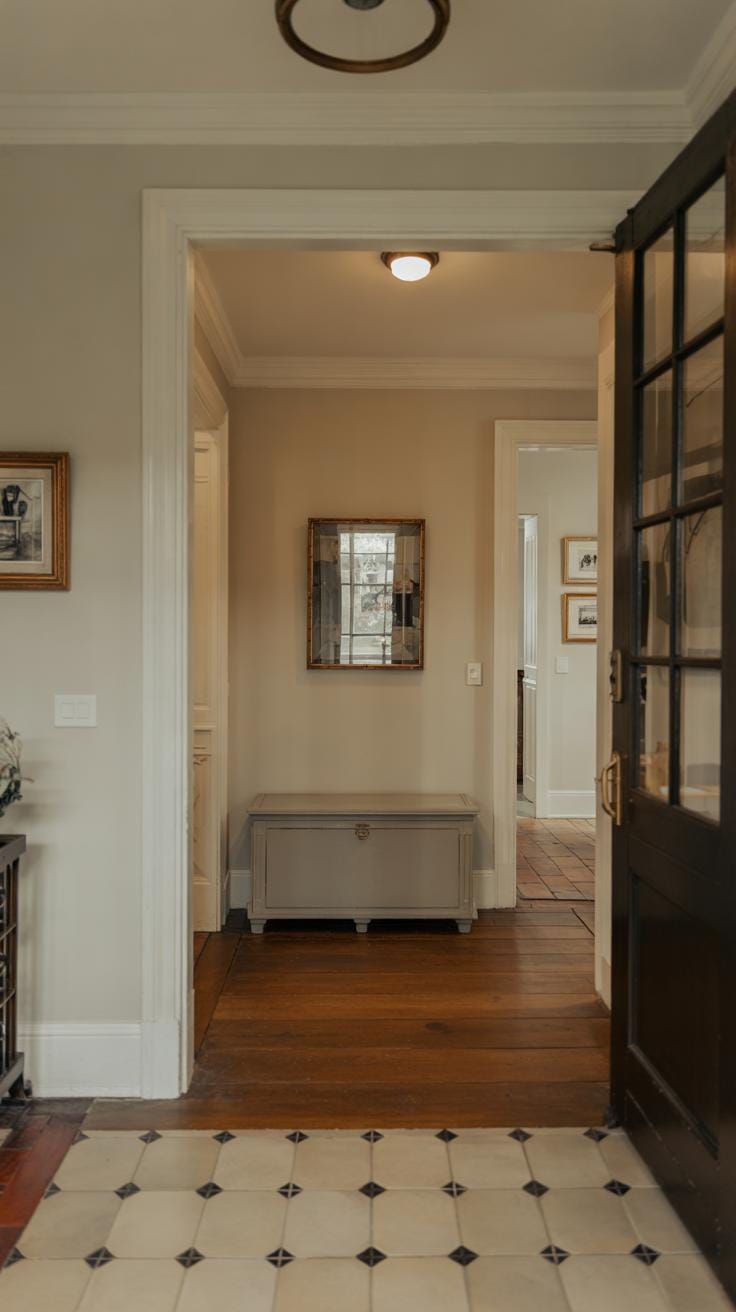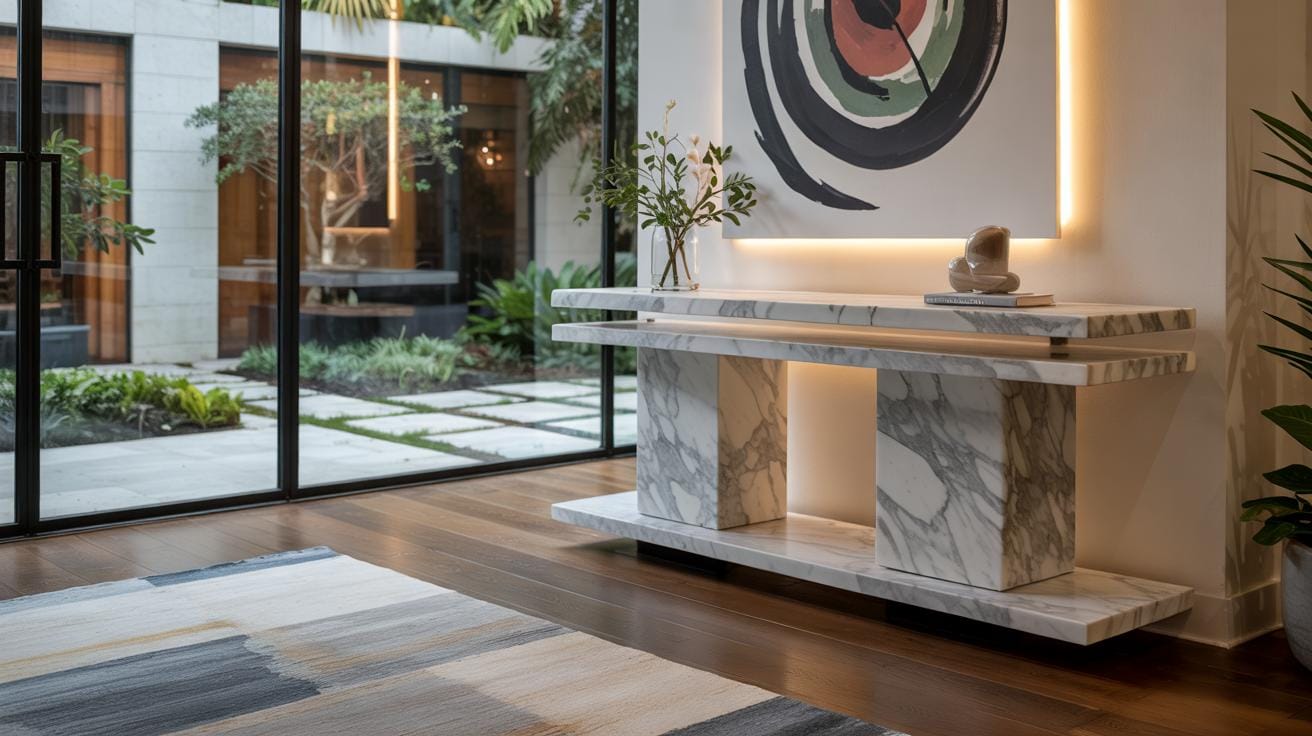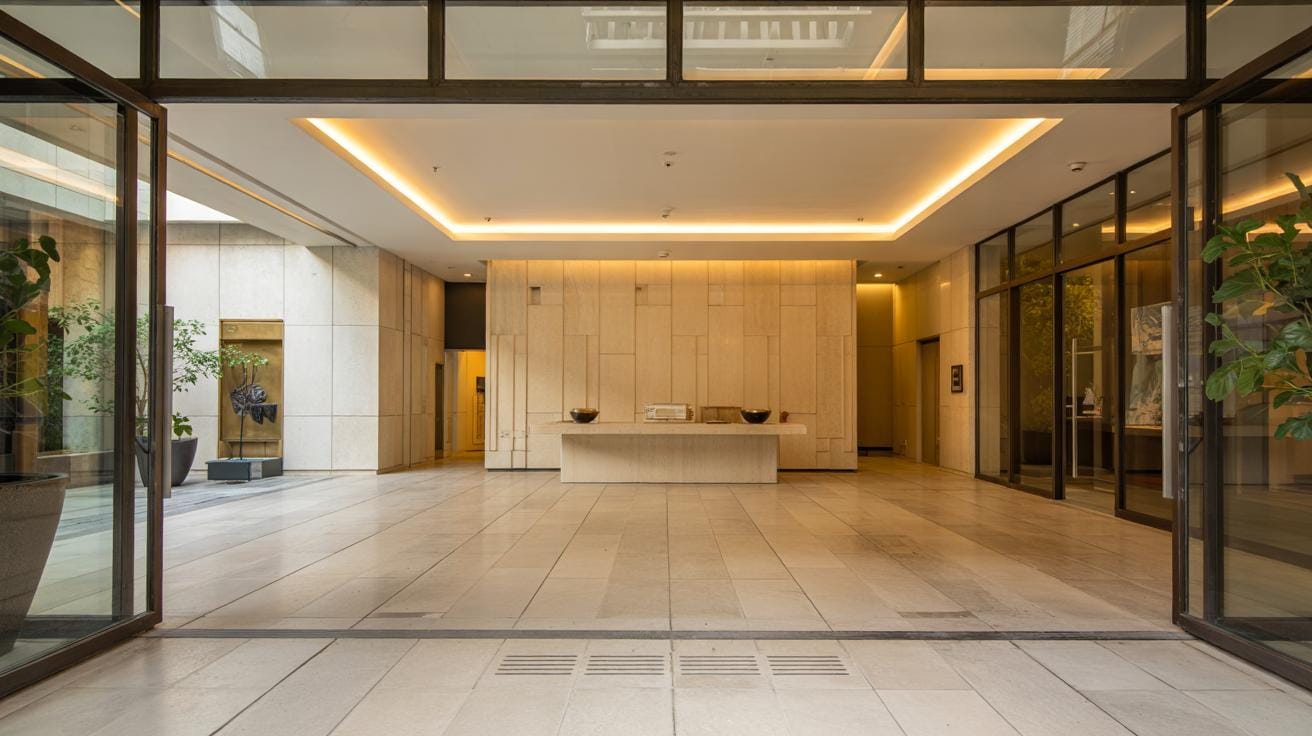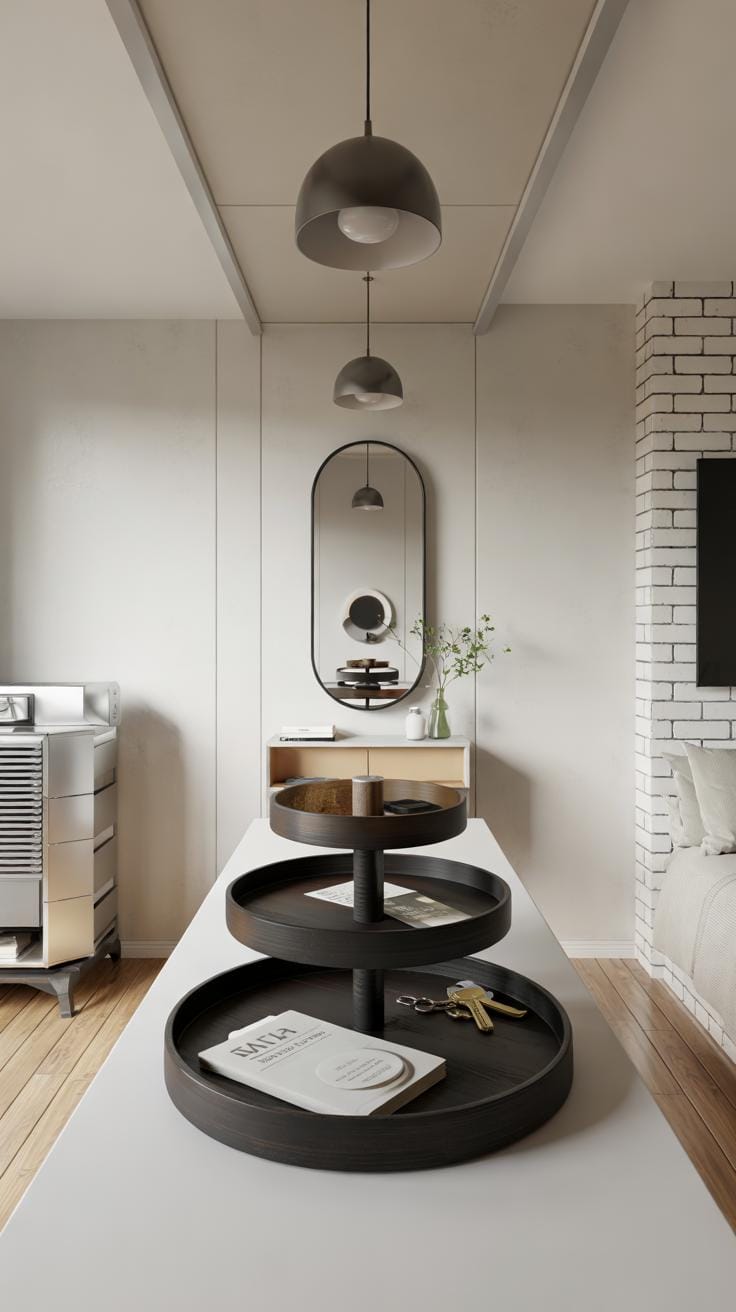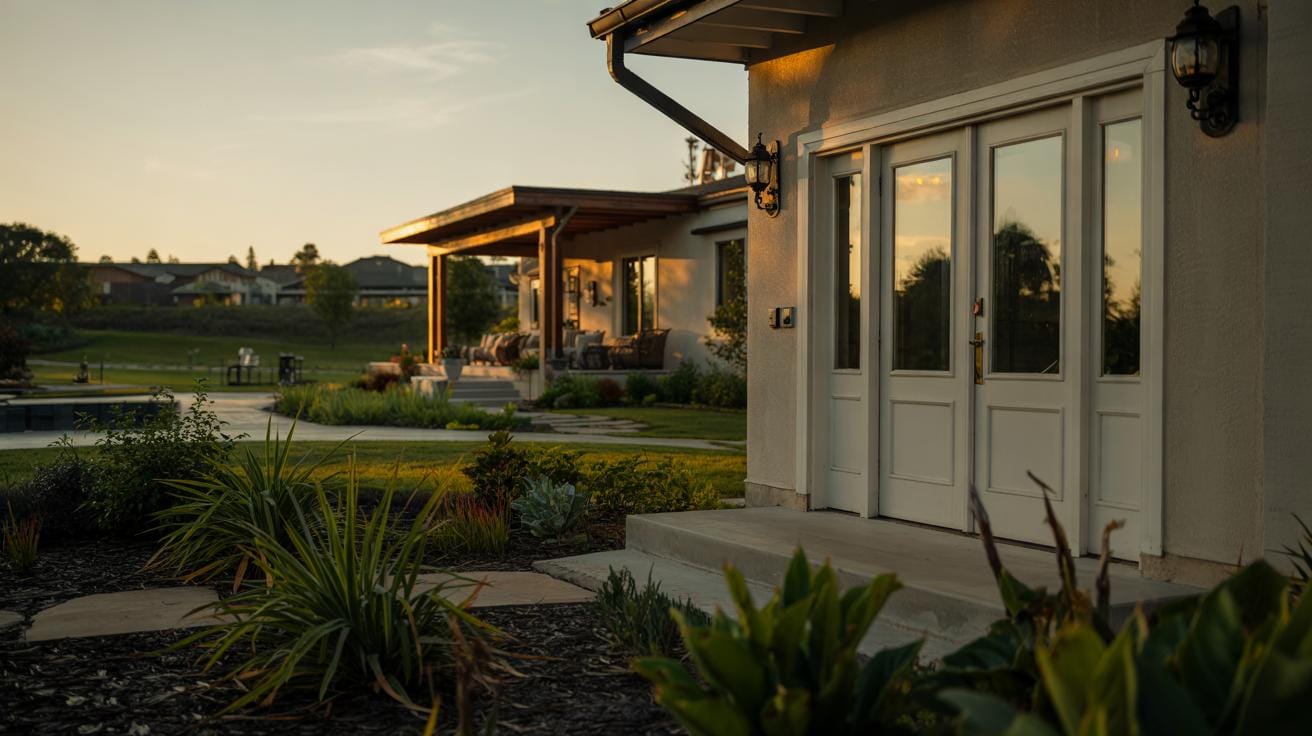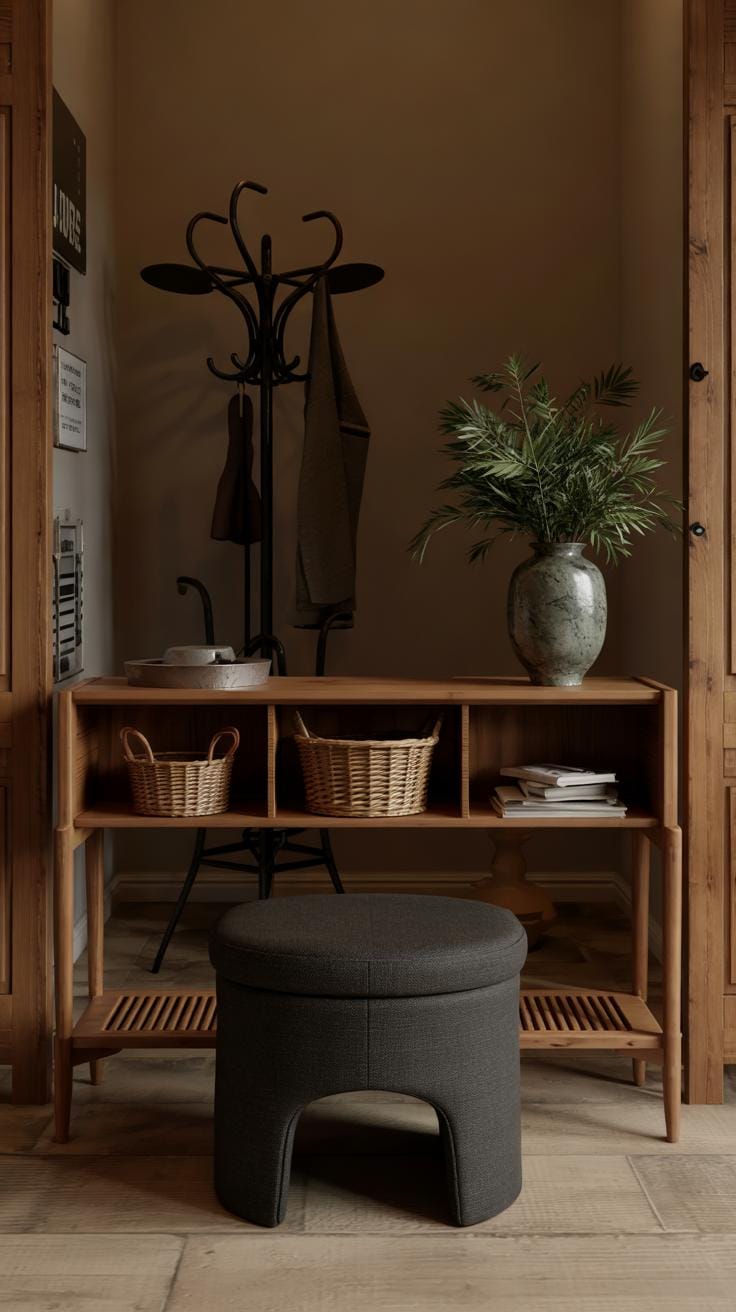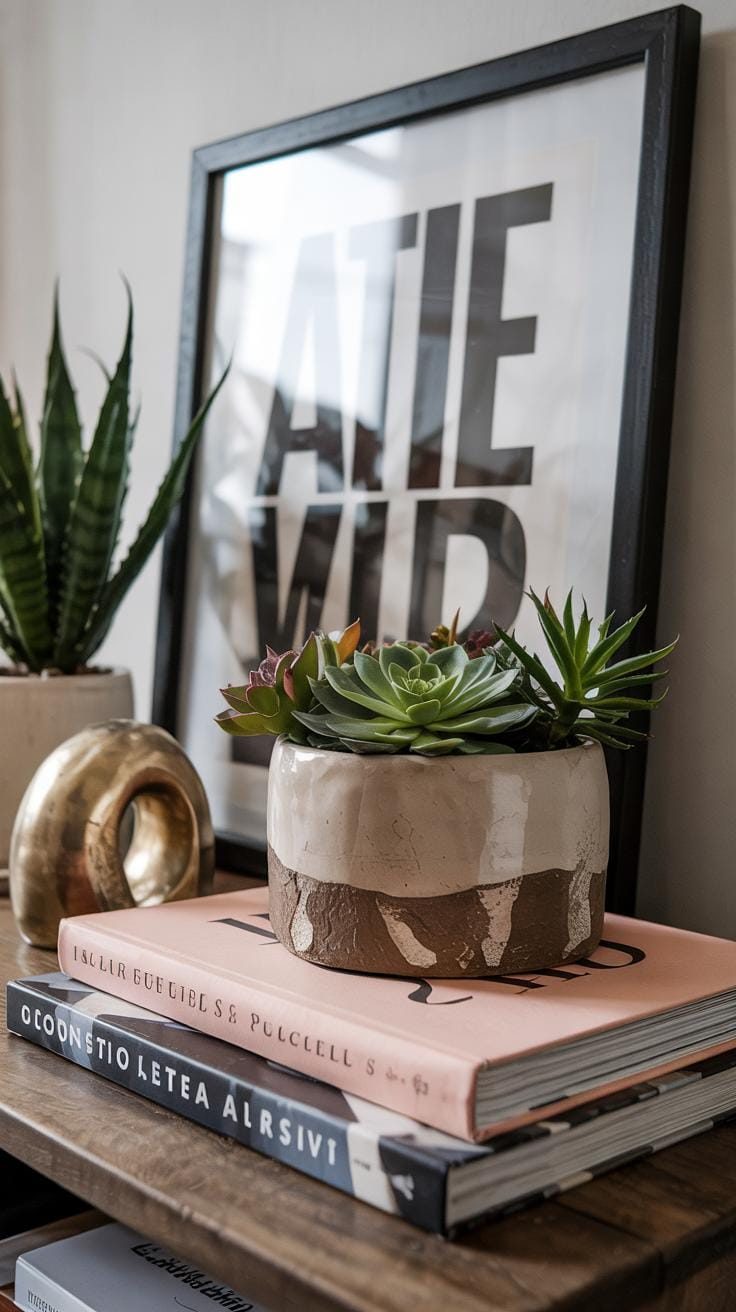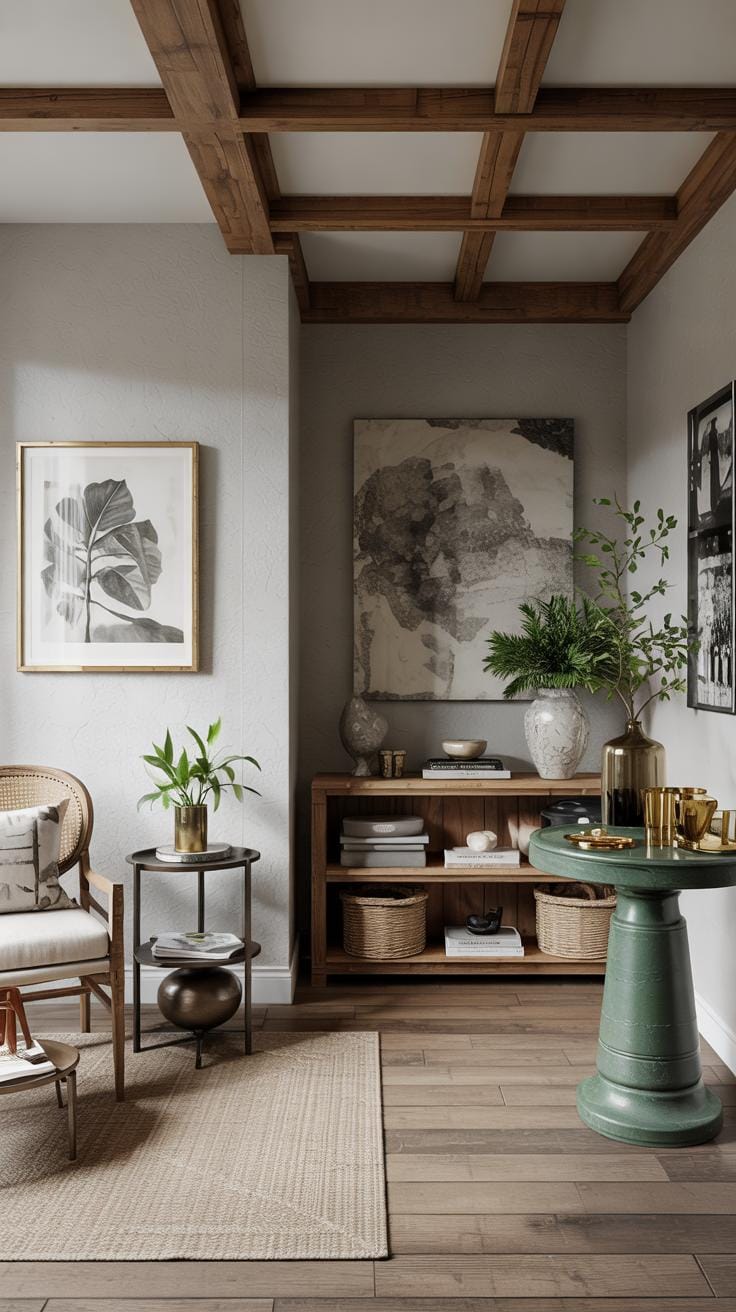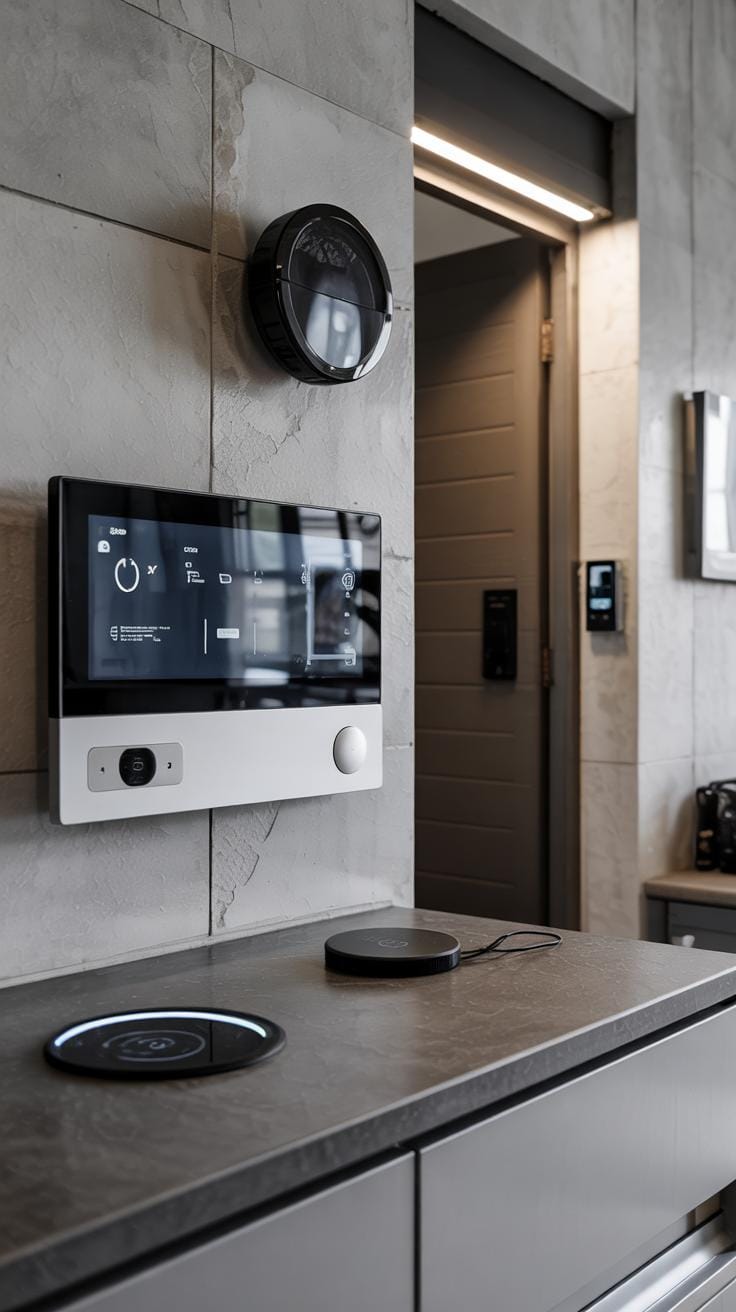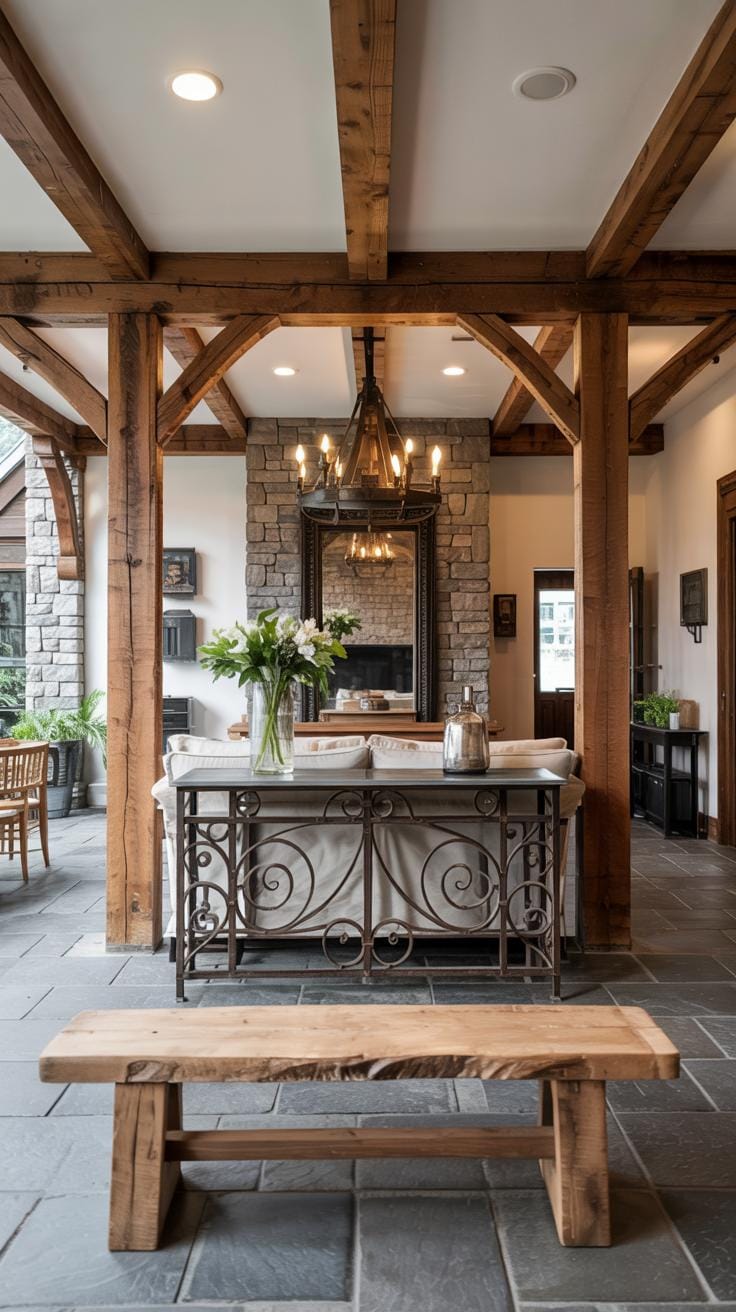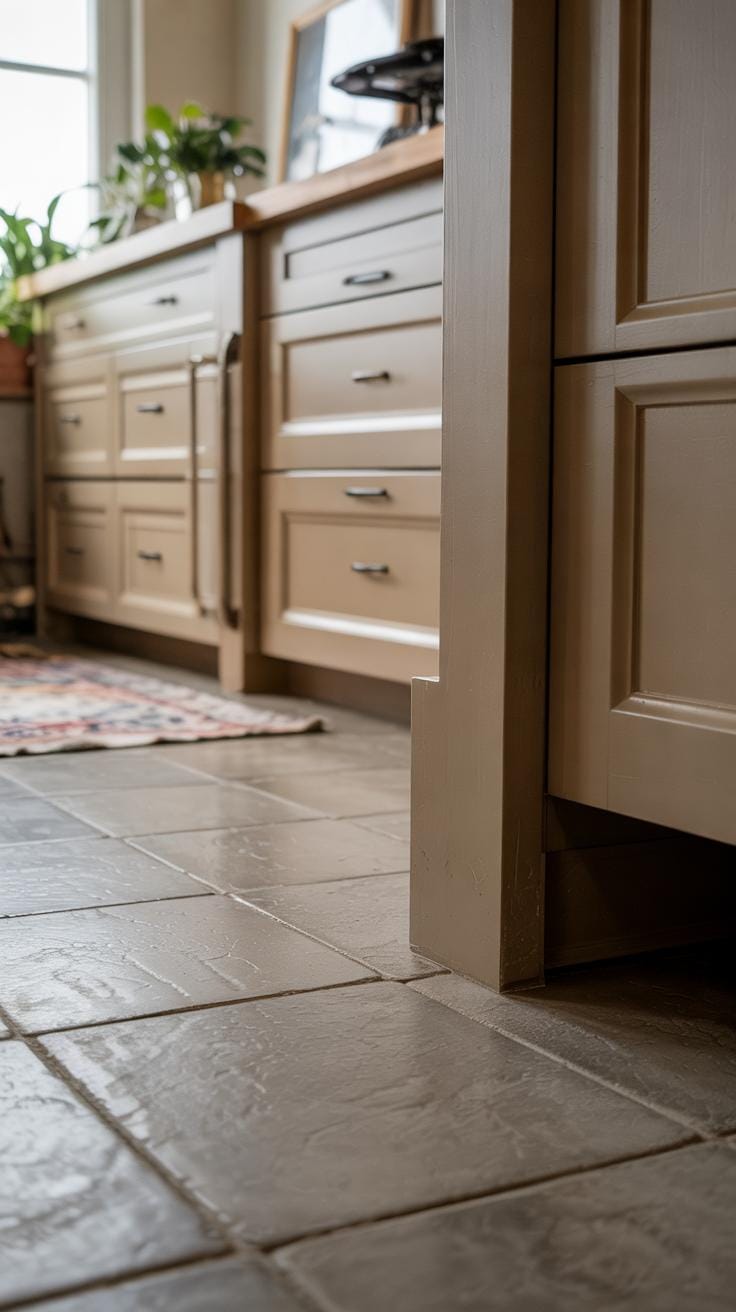Introduction
The entrance foyer sets the tone for your entire home. It is the first space visitors see and the place where you transition from outside to inside. A well-designed foyer creates a welcoming atmosphere, adds function, and reflects your personal style. Many people overlook this space or underestimate its impact on the overall home design. Focusing on your foyer can elevate your home’s look and feel starting right at the doorway.
Your entry space should be both practical and inviting. With thoughtful styling techniques, you can define your foyer to maximize space, enhance lighting, and showcase your taste. Consider the furniture, decor, lighting, and layout to create a cohesive and functional environment. This article provides insights and ideas to help you transform your entrance foyer into a charming and useful part of your home.
Understanding The Role Of The Entrance Foyer
The entrance foyer marks the boundary between your home and the outside world. It acts as a transition zone where guests move from public space to your private environment.
This area holds the power to shape the first impression visitors form about your home. Have you ever stopped to think how your foyer sets the tone before someone steps further inside?
Practical functions include offering space to store shoes, jackets, umbrellas, and bags. Without a proper foyer, clutter can spill into your living areas, making your home feel disorganized.
More than a passageway, the foyer invites interaction and adds an organizational layer. It helps maintain cleanliness and order, especially on busy days when things pile up at the door.
What Does An Entrance Foyer Do
Your foyer serves as a buffer between outdoors and indoors. It stops dirt, noise, and cold air from rushing into your living space immediately.
When guests arrive, the foyer acts as a social area where greetings happen. Its design influences how welcome and comfortable visitors feel.
Functionally, it provides storage for everyday items like shoes and coats. Organizing this space ensures ease of coming and going without chaos.
Have you noticed how cluttered entryways can overwhelm your mood when entering a home? Keeping this zone tidy helps maintain a calm atmosphere.
Why Styling Your Foyer Matters
The style of your foyer affects your home’s overall feeling. A carefully styled entrance encourages positive emotions in both you and your visitors.
Imagine a clean, well-lit foyer with thoughtful decor versus a cramped, disorganized space. Which would you prefer to walk into after a long day?
Styling your foyer reflects your personal taste and attention to detail. It can make your home feel inviting, warm, and balanced.
Consider what message you want to send as soon as someone steps inside. Styling your foyer is an opportunity to express that clearly and practically.
Maximizing Space In Small Entryways
Your entrance foyer sets the tone as soon as you walk through the door. Small entryways can feel cluttered quickly, reducing their function and visual appeal. How can you make these limited spaces work harder for you?
Start by choosing furniture designed for tight spots. Use benches that are narrow but long enough to sit on, allowing you to take off shoes without blocking traffic flow. Wall-mounted shelves keep the floor clear and create a tidy place for keys or mail. Hooks are perfect for hanging coats or bags without crowding the floor.
Decluttering plays a key role. Keep only what you need at the door and store the rest elsewhere. This approach prevents overwhelming the small area and keeps your foyer welcoming and organized. How often do you reassess what enters your entry space?
Choosing Compact Furniture
Selecting the right pieces can save space while adding function. Slim benches with storage beneath give you a spot to sit and hide shoes. Wall-mounted shelves free up floor area and keep everyday items within sight.
Include hooks for coats, hats, and bags to avoid piles on furniture or floors. You might choose hooks with small shelves for sunglasses or gloves. Think about furniture that combines more than one purpose to maximize your square footage.
Utilizing Vertical Space
Look upwards to create extra room. Tall storage units can hold shoes, umbrellas, or seasonal gear without taking up much floor space. Mirrors placed high on walls reflect light and make the foyer feel larger, bringing in a sense of height.
Hooks placed at eye level and above create layers of storage for various items. Vertical organization keeps essential belongings handy without creating clutter. How can you make your walls work harder to expand your entryway’s potential?
Lighting Options For A Welcoming Entry
Your entrance foyer is the first space guests see, so lighting plays a key role in shaping their initial impression. Natural light offers a fresh and open feel through windows or glass doors. It brightens the area without extra energy costs and connects the inside with the outdoors. Think about installing sidelights or a transom window to boost daylight entry.
Artificial lighting steps in when natural light fades or is limited. Ceiling fixtures like chandeliers or flush mounts provide general brightness and set the tone. Wall sconces add charm while freeing up floor space, perfect for smaller foyers. Accent lighting highlights art, plants, or architectural details, adding depth and interest.
Choosing the right mix depends on your foyer’s size, shape, and style. Have you considered how the balance of light can change the mood the moment someone enters your home?
Natural Vs Artificial Lighting
Natural light creates a welcoming, airy atmosphere and helps you see colors and textures accurately. It improves your mood and reduces reliance on electric lights during the day. However, natural light’s availability depends on your foyer’s orientation and window placement.
Artificial lighting fills in gaps and brings consistent brightness at night or on cloudy days. It lets you control the ambiance with different bulb tones and dimmers. You can highlight specific areas, like a mirror or a coat rack, making the space both functional and inviting.
Consider your access to daylight. Can you enhance natural light with lighter window treatments or mirrors? Or do you need a carefully planned lighting scheme to keep your entry bright at all hours?
Layering Light For Effect
Layering light means combining ambient, task, and accent lighting to create a cozy and practical foyer. Ambient lighting provides overall illumination through ceiling lights or large fixtures. Task lighting focuses on functional zones like a key drop spot or near shoe storage.
Accent lighting draws attention to decorative elements such as artwork or a sculptural vase. Use LED strips, spotlights, or small lamps to add these touches. This layered approach ensures your foyer feels warm and welcoming.
Think about the activities you do in your entryway. Would adding a table lamp or a dimmer switch help you adjust the mood for day versus evening? Layering your lighting gives you control and style in one space.
Color And Texture Choices To Define The Space
Selecting Colors That Reflect Your Style
Choose wall colors that match the style and feel of your home’s interior. Warm tones like soft beige or muted gold create a cozy, inviting atmosphere. Cooler shades such as gray or pale blue give a calm and modern look. Think about the mood you want to set when someone enters your home. Do you prefer a bold statement with deep navy or emerald green? Or a light, airy feel with whites and pastels? Your choice influences how the space feels and flows into other rooms. Testing small patches on your foyer walls can help you see how different lighting affects the colors throughout the day.
Incorporating Texture For Interest
Adding texture makes your foyer more visually interesting and gives it depth. Use textured wallpaper with subtle patterns or raised designs to create a tactile wall feature. Placing rugs with loops, fringes, or varied fibers adds softness underfoot and contrasts against smooth floors. Natural materials like wood paneling or stone tiles introduce a rugged, grounded quality to the space. Think about how each texture interacts with your chosen colors and lighting. Do rough stone walls soften harsh light? Does a woven rug invite you to step inside? Combining textures invites touch and enhances the sensory experience for guests entering your home.
Furniture Essentials For Practical Style
Your entrance foyer needs furniture that offers both style and function. When selecting pieces, consider the size of your space and how you use it daily. Choosing the right furniture can make your entryway welcoming and organized, setting a positive tone for your home.
Start with items that serve clear purposes without overwhelming the area. A well-chosen piece can provide a place to pause, a spot to store essentials, and bring character into the room.
Ask yourself: What tasks do you perform regularly as you enter or leave your home? Do you need a spot to drop keys or bags? Is there a demand for seating when putting on shoes? Your answers will guide the kind of furniture to invest in, balancing convenience and appearance.
Seating For Convenience
Adding seating like a bench or chair in your foyer makes it easier to put on and take off shoes. This simple addition helps you avoid bending awkwardly or losing balance while getting ready. Benches with a slim profile fit well in smaller foyers.
Look for seating with additional storage underneath or built-in shelves. This dual use saves space and keeps the area tidy. Even a small chair can add comfort without crowding your entryway.
Do you find yourself rushing in and out, juggling shoes and bags? A dedicated seat can reduce stress and improve your daily routine from the moment you step inside.
Storage Solutions
Keeping your entryway clutter-free depends heavily on smart storage options. Shoe racks help keep shoes off the floor and easily accessible, preventing mess and saving space. Open racks encourage you to organize regularly, while closed cabinets hide clutter from view.
Coat stands or wall-mounted hooks hold jackets, hats, and scarves within reach. Choosing a stand that fits your style can complement the room and provide vertical storage, freeing up floor space.
Consider furniture that combines several storage needs at once. For example, a bench with shoe storage or a cabinet with hooks inside for keys and mail. What storage options fit your daily habits and available space best? Keeping your foyer orderly boosts the overall impression of your home and makes coming and going smoother.
Decor Elements To Personalize Your Entryway
Your foyer sets the first mood for anyone entering your home. Choosing decor that reflects your personality helps visitors feel welcome without overwhelming the space. Consider selecting a few meaningful items, such as a favorite sculpture or family photos, to give the entryway a gentle personal touch.
Keep surfaces clear to avoid clutter. A small tray or bowl can hold keys and mail neatly. Textured rugs or cushions on a bench invite comfort and introduce warmth. Think about colors and patterns that match your home’s style but remain subtle enough to keep the space feeling open and inviting.
Ask yourself which objects tell your story best. How can you make your guests feel at home with simple, thoughtful decor choices? Combining practicality with these personal touches will make your foyer both stylish and functional.
Mirrors To Open Space
Mirrors do more than show your reflection—they expand your foyer visually. Positioning a well-sized mirror opposite a window or light source increases natural light, making the space brighter. This effect creates a sense of openness in even small entryways.
Choose frames that match your decor style, whether modern metal or rustic wood. A round mirror softens sharp corners, while a rectangular one adds structure. Experiment with mirror placement to maximize both function and style.
Have you noticed how a mirror can instantly uplift a room? Use this tool to enhance your entryway’s sense of space and light without sacrificing style or cluttering your design.
Art And Greenery
Art and plants bring personality to your foyer by adding color, texture, and life. Select one or two art pieces that resonate with you and fit the scale of the wall. A graphic print or a framed photo can create a striking focal point without crowding the area.
Plants improve air quality and add an organic feel. Choose low-maintenance options like snake plants or pothos that thrive indoors. Place your greenery on a pedestal, shelf, or in a stylish pot on the floor to balance height and visual interest.
What emotions do you want your entryway to evoke? Integrating artwork and plants helps you craft a welcoming and lively space that feels uniquely yours.
Creating Zones Within The Foyer
Large foyers offer more than just space—they create opportunities to organize and improve the flow of your entry area. By dividing the foyer into functional zones, you can make your entry both practical and inviting. Think about the activities that happen when someone enters your home. Where will guests sit? Where should daily items be stored? When these questions guide your design, each zone will serve a clear purpose.
Start by defining a welcoming area where guests can pause comfortably. A separate storage and drop zone helps keep essentials like keys and bags organized, preventing clutter from spreading. Creating clear zones also directs movement, so people don’t bump into furniture or scattered belongings. How does your foyer flow when you enter? Can you move easily from greeting guests to storing your items?
Setting up distinct areas isn’t about filling the space but giving each function room to breathe. Use rugs, lighting, or furniture placement to separate zones subtly. This strategy keeps your foyer tidy and makes your home’s first impression one of calm and order.
Welcoming Area
Your foyer’s welcoming area should invite guests to pause comfortably. Consider placing a small bench or chair near the door. This spot allows visitors to sit when taking off shoes or waiting. Choose a piece that fits your space without blocking pathways.
Add personality with a stylish mirror or framed art above the seating. Plants or a small table with fresh flowers brighten the space and make it feel cared for. Think about how light plays here—good lighting puts your welcoming zone in a warm, inviting glow.
Ask yourself if this area feels like a natural pause point. Can guests drop their bags and relax briefly? Creating this space encourages easy, friendly interactions and sets a positive tone the moment someone steps inside.
Storage And Drop Zone
Organizing daily essentials is a key to maintaining a clean foyer. Dedicate space for a drop zone where you can place keys, bags, and mail immediately upon entering. Install hooks or a wall-mounted organizer for coats and hats nearby.
A bench with hidden compartments or a small cabinet can hold smaller items out of sight but within reach. This cuts down on clutter spreading to other rooms. Consider adding a charging station to keep devices powered and ready.
Does your drop zone help you locate essentials quickly? If not, rethink your setup until it works seamlessly with your routine. An efficient storage area simplifies your day and supports a smooth transition from outdoors to indoors.
Incorporating Technology For Convenience
Your entrance foyer sets the tone the moment you walk through the door. Integrating technology here can boost both convenience and security. Think about installing smart devices that respond automatically as you enter. These systems help you control lighting, monitor visitors, and organize essentials all in one place.
Technology can work quietly but efficiently to make your daily routines smoother. Consider how a well-planned tech setup in the foyer might change your home life. How often do you find yourself fumbling for keys or scrambling to turn on lights? Smart technology in the entryway removes these small annoyances. It turns your foyer into a hub that welcomes you and keeps your home protected before you even step inside.
Smart Lighting And Security
Smart bulbs in the foyer allow you to adjust brightness or color with a simple app or voice command. Motion sensors can detect movement, turning the lights on automatically, which is perfect when your hands are full. This solution not only saves energy but also improves safety by removing dark spots where intruders might hide.
Security cameras placed in or near the foyer let you see who is at the door in real time from your phone. Some cameras even send alerts if they detect unusual activity. This means you can act quickly and feel secure whether you are home or away. Can your current entry setup offer this level of control and peace of mind?
Charging Stations And Key Holders
Foyers often become cluttered with phones, keys, and other small items. Installing a charging station with built-in USB ports or wireless pads keeps your devices powered and organized. Look for sleek, wall-mounted designs that blend with your decor and free up surface space.
Key holders equipped with smart tracking can help you avoid misplacing essentials. Some come with built-in chargers or notification systems that alert you if keys leave a set zone. By combining these tech-friendly elements, you make the foyer more functional while keeping your daily essentials easy to find and ready to use.
Adapting Style According To Home Architecture
Your foyer sets the tone for the entire house, so matching its style to your home’s architecture creates a seamless look. Start by identifying your home’s key features—whether it has classic crown moldings or sleek, clean lines. Use these details as your guide.
For example, a colonial home with traditional woodwork benefits from a foyer with warm finishes, framed mirrors, and timeless furniture pieces. If your home features minimalist or industrial elements, consider simple furnishings, metal accents, and neutral colors to echo that style.
Consider the scale too. Large entryways suit bold statement pieces, while smaller foyers need compact decor that doesn’t feel crowded. Can your furniture and accessories echo the architectural shapes or motifs in doors, windows, or floors? This alignment turns the entry into an extension of your home’s character.
Pay attention to lighting choices that fit architectural style. A vintage chandelier fits a Victorian house but may feel out of place in a modern setting. How are you using your foyer to reinforce the story your home tells?
Traditional Vs Modern Styles
Styling a traditional foyer usually centers on warmth and rich textures. Think wood accents, patterned rugs, and classic art. Entry tables with curved legs or detailed carving fit well here. These elements create a feeling of familiarity and comfort right when you walk in.
Modern foyers embrace simplicity and function. You’ll see clean lines, open space, and minimal accessories. Furniture often has straight edges, and color schemes stay neutral or monochrome. Materials like glass, metal, and smooth wood surfaces keep the look fresh.
Furniture placement also differs. In traditional foyers, a console table with a pair of lamps might create a balanced look, while modern ones might use a single sculptural piece or a sleek bench. Does your home lean toward one style, or do you prefer mixing the two?
Blend Old And New
Combining vintage and modern pieces can produce an inviting yet current foyer. Start by choosing one key piece from each style. For example, pair a mid-century modern bench with an antique mirror or a vintage rug with a simple modern light fixture.
Keep the color palette unified to avoid clashing elements. Neutral tones work well, allowing the shapes and textures of old and new pieces to stand out without overwhelming. Use accessories like vases or artwork to connect both styles subtly.
Consider contrast as a design tool. A sleek lamp on an aged wooden console blends eras while maintaining balance. What unique items do you have that tell your home’s story across different times?
Maintaining Your Entrance Foyer Over Time
Keeping your entrance foyer organized requires setting simple daily or weekly habits. Make it a routine to clear out shoes, bags, and mail as soon as you enter. Use baskets or trays to collect loose items quickly and reduce clutter buildup.
Cleaning should focus on floors and surfaces, since dirt and dust collect faster in entryways. Sweeping or vacuuming regularly keeps the space looking neat. Wiping down furniture and doorknobs prevents grime and maintains a fresh feel.
To keep your foyer functional year-round, think about what changes as seasons shift. For example, store winter coats and boots in a nearby closet during summer to free up space. This way, your foyer adapts without becoming overcrowded.
Regular Cleaning And Decluttering
Clear clutter daily before it piles up. Ask yourself if each item belongs near the door or can be stored elsewhere. Designate spots for keys, mail, and shoes so things don’t scatter.
Try a quick 5-minute sweep and wipe session every morning or evening. This habit keeps dirt and dust at bay. When you find it harder to move around the foyer, it usually means it’s time to declutter or reorganize.
Consider adding functional storage that fits your lifestyle. Hooks for backpacks, a small bench with storage below, or a slim console table with drawers can help keep the area tidy.
Refreshing Decor Periodically
Swap out smaller items like pillows, rugs, or artwork to update the look without spending much. Changing colors with the seasons, such as lighter shades in spring and warmer tones in fall, renews the space.
Adding or removing plants can freshen your foyer instantly. Choose low-maintenance greenery if you don’t want extra chores. Rotating decor pieces keeps the area interesting and matches current styles.
Pay attention to lighting fixtures or hardware. Replacing a lampshade or door handle can give the foyer a new feeling. Ask yourself what makes your space feel outdated and address that one detail first.
Conclusions
Careful planning and design can make your entrance foyer a standout part of your home. Use space wisely by selecting the right furniture and accessories. Consider lighting options to brighten the area without overcrowding it. Choose colors and decor that reflect your personality and complement the rest of your house. The foyer is your chance to impress guests from the moment they enter.
Defining your entry space with these styling techniques improves both aesthetics and function. It can help keep clutter organized, provide storage, and give you a welcoming place to greet visitors. Take time to customize your foyer to meet your needs and style preferences. Your entryway sets the mood for your home and provides practical benefits daily.

